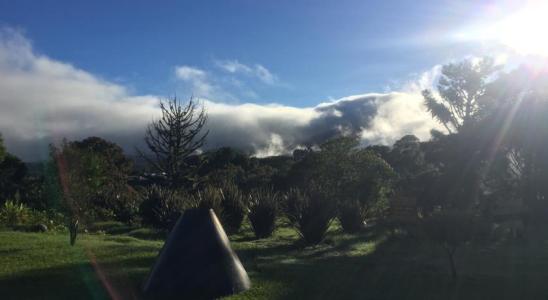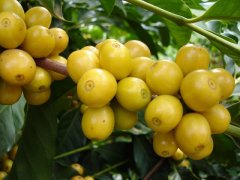A detailed introduction of the coffee production areas of Costa Rica on behalf of coffee from Central America.
For professional baristas, please follow the coffee workshop (Wechat official account cafe_style)
The land bridge between Central America and North and South America consists of seven countries, namely Belize, Costa Rica, El Salvador, Guatemala, Honduras, Nicaragua and Panama. Seven Central American countries all produce coffee, of which Guatemala, Costa Rica and Honduras are among the top 10 global coffee exporters.
Coffee began to flourish in Central America in the 18th century, and this important economic product originated in Costa Rica around 1840. Since Central America became independent from Spain in 1821, there has been a lot of war. Costa Rica was far from the Spanish colonial capital Guatemala. On the contrary, Guatemala and El Salvador delayed coffee production because of the civil war. After that, the political dispute gradually subsided, and the Central American countries except Honduras began to produce coffee in the 19th century.
Central America has the natural advantages of sunshine, land, and mountains, and a sufficient working population, which makes the region unique in growing and producing high-quality coffee. In the late 19th century, coffee became an indicator of economic growth in Central American countries and passed the Coffee Promotion Act in an all-round way. With the most remarkable results in countries such as Costa Rica, El Salvador and Guatemala, coupled with the scientific and technological way of growing coffee, Central America has become one of the four largest coffee producing areas in the world.
Costa Rica
The seven coffee producing areas are distributed from northwest to southeast and inland central plateau. Costa Rican volcanic terrain has fertile volcanic ash, mild climate and stable abundant rainfall, making coffee one of the main agricultural products in Costa Rica.
Costa Rican coffee began to develop in the middle of the 18th century and was the first country to be introduced into Central America, so the coffee organization has a complete system from production to marketing. In terms of quality, Costa Rican coffee has always been rated as world-class high-quality coffee by the world. Its coffee beans are all Arabica species. Pure flavor, pleasant aroma, acidity taste have an unassailable balance, suitable for individual coffee, can also be mixed into comprehensive coffee.
Name of producing area
* Western Valley West Valley: high acidity, full flavor, fragrance / acidity, and beans can not compete with beans from other regions, but the overall taste balance is good enough with almonds and peach flavors.
* Central Valley Central Valley: high acidity beans with rich aroma / Costa Rica's earliest coffee growing area, rich volcanic soil, sometimes with chocolate aroma
* Tarasu Tarrazu: smooth, high acidity, hard, full-bodied beans / world-famous producing areas, the main feature is that the high seafood areas create an incomparable perfect taste.
* Sanhe Tres Rios: smooth, high acidity, hard, full-bodied, rich aroma / good climatic conditions, obvious taste and good balance
* Euro Orosi: smooth sour beans, full aroma / smooth taste, well-balanced

Important Notice :
前街咖啡 FrontStreet Coffee has moved to new addredd:
FrontStreet Coffee Address: 315,Donghua East Road,GuangZhou
Tel:020 38364473
- Prev

Guatemala Camus Coffee hand-brewing course San Pero Manor White Honey treatment Kaddura Variety
Professional coffee knowledge exchange more coffee bean information please follow the coffee workshop (Wechat official account cafe_style) Guatemala coffee industry Guatemala coffee beans Guatemala coffee recommended Guatemala white honey Jiamus, retain 20% pectin fermentation honey treatment is a rare coffee treatment, its specific operation methods are as follows: 1: coffee fruit after picking
- Next

Parameters of Central American Salvadoran Coffee characteristics of Salvadoran Coffee producing areas
For the exchange of professional baristas, please follow the Coffee Workshop (official Wechat account cafe_style). There are seven countries in Central America, namely, Belize, Costa Rica, El Salvador, Guatemala, Honduras, Nicaragua and Panama. All seven countries in Central America produce coffee, among which Guatemala, Costa Rica and Honduras are global coffee exporters.
Related
- Detailed explanation of Jadeite planting Land in Panamanian Jadeite Manor introduction to the grading system of Jadeite competitive bidding, Red bid, Green bid and Rose Summer
- Story of Coffee planting in Brenka region of Costa Rica Stonehenge Manor anaerobic heavy honey treatment of flavor mouth
- What's on the barrel of Blue Mountain Coffee beans?
- Can American coffee also pull flowers? How to use hot American style to pull out a good-looking pattern?
- Can you make a cold extract with coffee beans? What is the right proportion for cold-extracted coffee formula?
- Indonesian PWN Gold Mandrine Coffee Origin Features Flavor How to Chong? Mandolin coffee is American.
- A brief introduction to the flavor characteristics of Brazilian yellow bourbon coffee beans
- What is the effect of different water quality on the flavor of cold-extracted coffee? What kind of water is best for brewing coffee?
- Why do you think of Rose Summer whenever you mention Panamanian coffee?
- Introduction to the characteristics of authentic blue mountain coffee bean producing areas? What is the CIB Coffee Authority in Jamaica?

